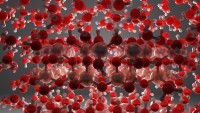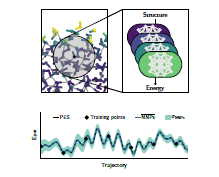Please find a list of funded projects for the CDT in Computational Methods for Materials Science below.
There are no funded projects available at the moment
We are a group of computational scientists fascinated by the study of challenging materials by means of computational methods. We primarily focus on developing machine learning potentials in order to provide insight into complex aqueous systems, for which accurate and efficient representations of potential energy surfaces are urgently needed. Examples of this are the exploration of the behaviour of water at interfaces, or confined in nanotubes and nanochannels, the mechanistic details of ion dissolution and proton transfer in water, as well as the interplay of CO2 and aqueous solutions.
We offer two positions for PhD students this year following the outline below. Funding for one of these projects is available. Please reach out via cs2121@cam.ac.uk to discuss possible research directions and funding options, in particular explaining why you are interested in working in the FAST group alongside a CV.
---
Aqueous Solvation Dynamics on Catalytic Platforms: A Journey Towards A Sustainable Future
In the context of sustainable reactions, the interface between materials and their aqueous surroundings emerges as a pivotal domain.
This PhD project undertakes an exploratory approach to decode the intricate solvation behaviours exhibited by catalytic materials.
These materials such hexagonal boron nitride, MoS2, TiO2, MXenes, or single-atom catalysts on host matrices, strategically positioned for applications such as CO2 reduction and water splitting processes, hold the potential to address climate change challenges.
Leveraging advanced atomistic simulations, this project seeks to unveil the intricate details governing aqueous solvation dynamics in contact with catalytic systems. By dissecting the fundamental interactions at play, the project aims to elucidate the mechanism underlying their catalytic performance. The insights provided through this project will lay a strong foundation to the development of novel sustainable strategies by harnessing the catalytic potential of these materials.
Further examples for interesting reactive processes can be found in “The first-principles phase diagram of monolayer nanoconfined water” Nature, 2022, 609, 512-516.

Figure 1: Nanocatalyst solvated by water
---
Reactions at Solid-Liquid Interfaces through Machine Learning: Efficient Potential Energy Surfaces
Within the evolving landscape of reactions at interfaces, accurate descriptions of surface interactions are of central importance. This PhD project focuses on methodological development, employing machine learning techniques to construct efficient representations of potential energy surfaces. Main challenges in this respect are the accurate inclusion of reactive processes at complex real-world solid-liquid interfaces, as well as the treatment of long-range interactions. Building on state-of-the-art art machine learning potentials based on committee neural networks, the project will explore the inclusion of message passing and physics inspired descriptors to improve the representation of interactions. Additional emphasis will be on the development of workflows for the assembly of training data using active learning strategies to rapidly tackle new systems of interest.
By using machine learning in atomistic simulations, the project will streamline the representation of potential energy landscapes. This advancement aims to unravel the intricate features governing complex solid-liquid interfaces, facilitating a deeper understanding of catalytic reactivity.
The resulting insights will hold the potential to optimise industrial processes, expedite catalyst discovery, and enrich our understanding of processes at interfaces.
Further details on the methodological framework can be found in “Machine learning potentials for complex aqueous systems made simple”, Proc. Nat. Acad. Sci., 2021, 118 (38), e2110077118

Figure 2: Example of a Machine Learning Potential based on a committee of neural networks.
